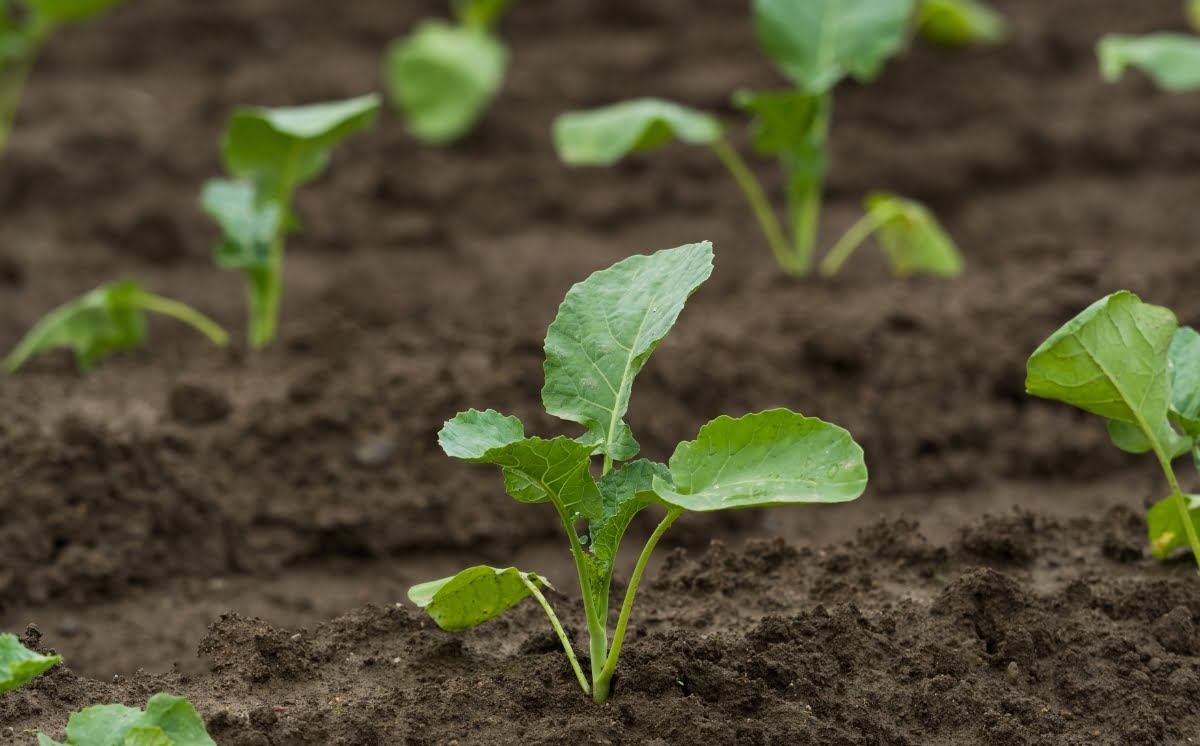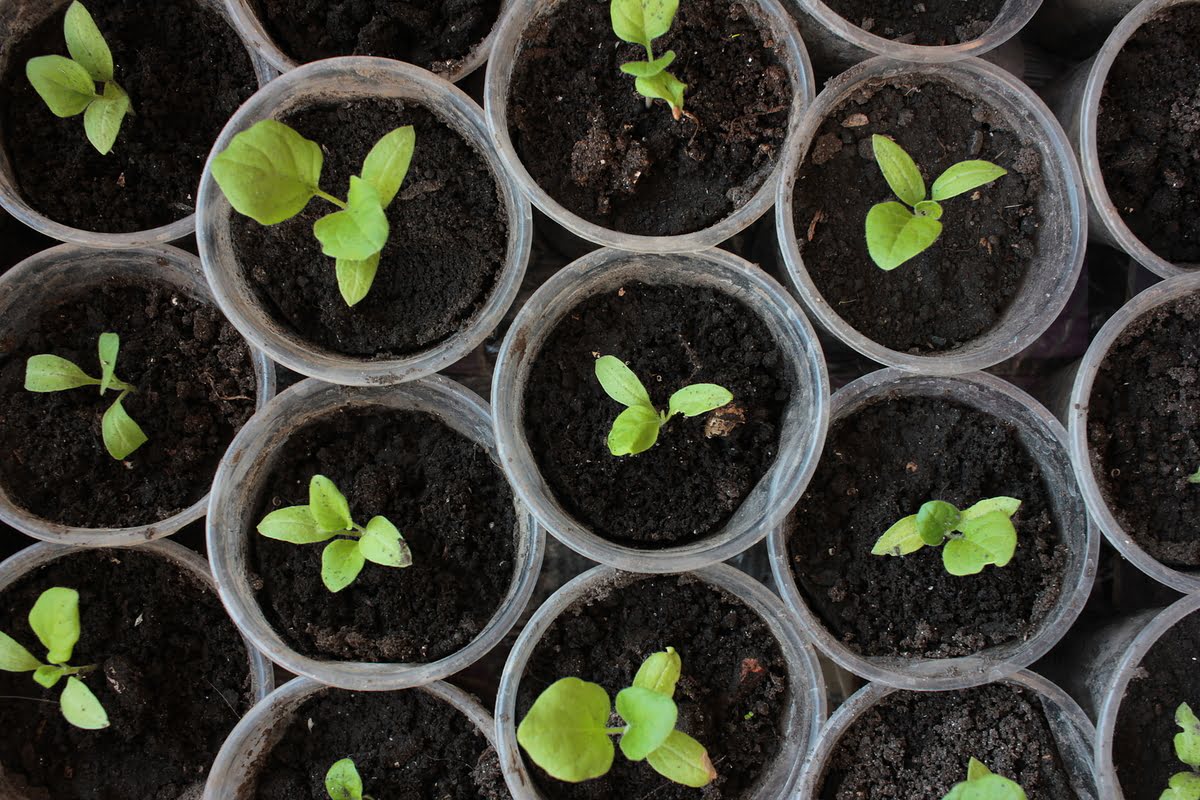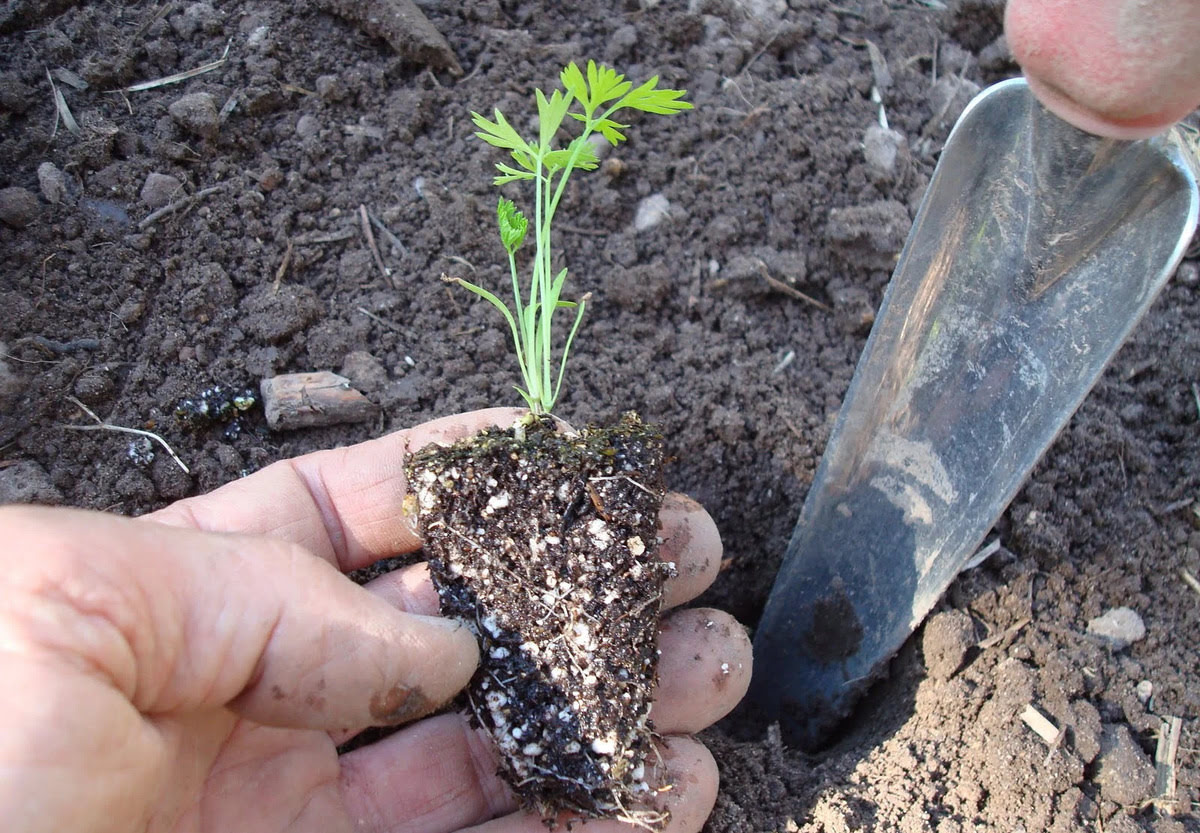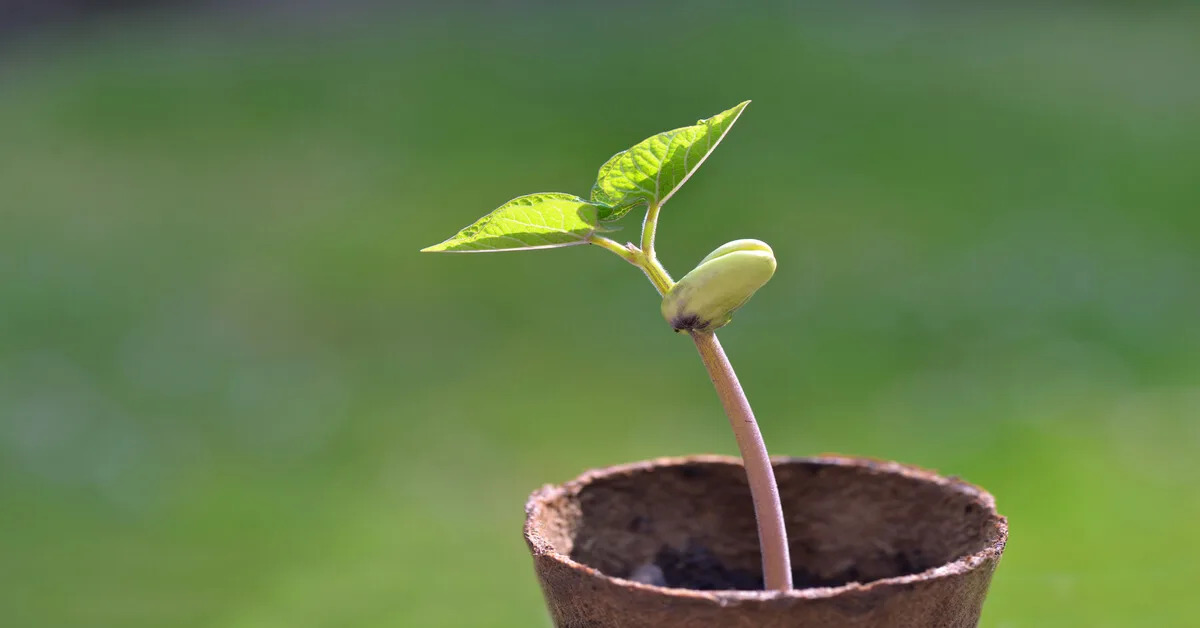Home>Types of Gardening>Edible Gardening>When To Transplant Broccoli Seedlings


Edible Gardening
When To Transplant Broccoli Seedlings
Modified: February 8, 2024
Learn when to transplant broccoli seedlings for successful edible gardening. Discover the optimal stage and conditions for transplanting your broccoli plants.
(Many of the links in this article redirect to a specific reviewed product. Your purchase of these products through affiliate links helps to generate commission for Chicagolandgardening.com, at no extra cost. Learn more)
Table of Contents
Introduction
Welcome to the world of edible gardening! If you have a green thumb and a love for nutritious and delicious homegrown vegetables, then you are in for a treat. One of the most popular and rewarding vegetables to grow in your garden is broccoli. Known for its high nutritional value and versatility in cooking, broccoli is a fantastic addition to any edible garden.
Before you can enjoy a bountiful harvest of broccoli, you need to go through the process of transplanting broccoli seedlings into your garden. While it may sound intimidating, with the right knowledge and techniques, you can successfully transplant your seedlings and ensure their healthy growth.
In this article, we will guide you through the essential steps and factors to consider when transplanting your broccoli seedlings. From determining the right time to transplant to providing proper aftercare, we will cover everything you need to know to give your broccoli a great start in its new home.
Transplanting broccoli seedlings is a crucial step in their development. It allows them to establish stronger root systems and adapt to their new environment. By giving them the best start possible, you are setting the stage for healthy growth and abundant harvests.
So, let’s dive in and explore the factors to consider and the best time to transplant your broccoli seedlings. Your edible garden adventure awaits!
Factors to Consider Before Transplanting Broccoli Seedlings
Before diving into the process of transplanting your broccoli seedlings, there are several important factors to consider. These factors will help ensure the success of your transplants and the overall health of your broccoli plants.
1. Seedling Age: The age of your broccoli seedlings plays a crucial role in determining their readiness for transplanting. Ideally, you should wait until the seedlings are 4-6 weeks old and have developed sturdy stems and a good leaf canopy. This ensures that they have reached a stage where they can withstand the stress of transplantation.
2. Weather Conditions: The weather conditions at the time of transplanting are essential to consider. Broccoli plants thrive in cool weather, so you should aim to transplant your seedlings when the temperatures are consistently between 55-75°F (13-24°C). Avoid transplanting during extreme heat or cold spells, as this can shock the plants and hinder their growth.
3. Soil Preparation: Before transplanting your seedlings, make sure the soil in your garden bed is well-prepared. Broccoli plants prefer fertile, well-draining soil with a pH level between 6.0 and 7.0. Work in organic matter like compost or well-rotted manure to improve soil fertility and structure.
4. Soil Moisture: Moisture levels in the soil are crucial for successful transplanting. Ensure that the soil is evenly moist but not overly saturated. This will help the seedlings establish their roots quickly in their new location. Water the soil thoroughly a day or two before transplanting to ensure adequate moisture.
5. Sun Exposure: Broccoli plants require at least 6 hours of direct sunlight daily. Choose a transplanting location that provides ample sun exposure. Avoid areas with too much shade, as it can result in leggy and less productive plants.
6. Transplanting Location: Consider the location where you plan to transplant your seedlings. Broccoli plants have a relatively large root system, so make sure there is enough space between each plant to allow for proper growth. Planting in raised beds or containers can provide better control over soil quality and drainage.
By taking these factors into consideration, you can ensure that your broccoli seedlings have the best chance of thriving in their new environment. Now that you know what to consider, let’s move on to understanding the signs that indicate your seedlings are ready for transplanting.
Signs of Readiness for Transplanting
Knowing when your broccoli seedlings are ready for transplanting is crucial for their successful establishment in your garden. Transplanting them too early or too late can result in stunted growth or transplant shock. Here are some signs to look for to determine if your seedlings are ready:
1. Strong and Healthy Seedlings: Look for seedlings that have sturdy stems and a vibrant green color. Avoid transplanting seedlings that are weak, leggy, or yellowing, as these may struggle to adjust to their new environment.
2. Well-Developed Root System: Gently lift a seedling from its container and inspect the root system. The roots should be well-developed and have a healthy white color. If the roots are crowded or appear discolored, the seedling may need more time to grow before transplanting.
3. True Leaves: Broccoli seedlings initially sprout with small, round cotyledon leaves. As they grow, they develop their true leaves, which are larger and more defined. Wait until the seedlings have at least 3-4 sets of true leaves before transplanting, as this indicates their maturity.
4. Thick and Bushy Growth: Healthy broccoli seedlings will have a dense and bushy growth habit. Avoid transplanting spindly or thin seedlings, as they may struggle to establish themselves in the garden.
5. No Risk of Frost: Broccoli seedlings are sensitive to frost and cold temperatures, which can cause damage or even kill them. Make sure all risk of frost has passed before transplanting your seedlings. Check your local frost dates and weather forecasts to determine the safest time for transplantation.
By observing these signs, you can ensure that your broccoli seedlings are strong and mature enough to handle the transplanting process. Once you have determined the readiness of your seedlings, it’s time to learn about the best time to transplant them for optimal growth.
Best Time to Transplant Broccoli Seedlings
The timing of transplanting is crucial for the success of your broccoli seedlings. It’s essential to choose the right time when the weather conditions and soil temperature are favorable for their healthy establishment and growth.
The best time to transplant broccoli seedlings is typically when they are 4-6 weeks old and have reached a height of 3-4 inches (7.6-10 cm). At this stage, the seedlings are robust enough to handle the stress of transplantation and are more likely to adapt well to their new environment.
When determining the best time for transplanting, it’s important to pay attention to the local climate and temperature patterns. Broccoli is a cool-season vegetable and thrives in temperatures between 55-75°F (13-24°C). Transplanting too early, when the soil is still cold, can result in slow growth and poor development. On the other hand, transplanting too late, when the weather becomes excessively hot, can cause the plants to bolt or become stressed.
In general, it’s recommended to transplant broccoli seedlings in early spring, once the frost risk has passed and the soil has started to warm up. Depending on your location, this could be anywhere from late February to early April. If you live in a region with a mild climate, you can also consider transplanting in the fall, ensuring that the plants have enough time to establish before the arrival of freezing temperatures.
It’s essential to keep an eye on the weather forecast before and after transplanting. Avoid transplanting during extreme weather conditions, such as heatwaves or heavy rainfall. Choose a day that is mild and calm, preferably with overcast skies, as this will help minimize stress on the seedlings.
By transplanting your broccoli seedlings at the right time, you are giving them the best chance to thrive and produce a bountiful harvest. Now that you know when to transplant, let’s move on to the steps involved in the transplanting process.
Steps for Transplanting Broccoli Seedlings
Transplanting broccoli seedlings may seem daunting, but with a few simple steps, you can ensure a successful and smooth transition for your plants. Follow these steps to transplant your broccoli seedlings:
- Prepare the garden bed: Choose a sunny location in your garden with well-drained soil. Remove any weeds or debris and loosen the soil using a garden fork or tiller. Incorporate organic matter, such as compost or well-rotted manure, to improve soil fertility.
- Water the seedlings: Water the seedlings thoroughly a few hours before transplanting. This helps ensure that the root ball stays intact during the transplanting process.
- Dig holes: Dig holes in the garden bed that are slightly larger and deeper than the root ball of your seedlings. Space the holes 18-24 inches apart to allow adequate room for the broccoli plants to grow.
- Remove seedlings from containers: Gently remove the seedlings from their containers, being careful not to damage the roots. If the seedlings are root-bound, use your fingers to gently loosen the roots before planting.
- Place seedlings in the holes: Carefully place each seedling into its respective hole, ensuring that the top of the root ball is level with the soil surface. Backfill the hole with soil, gently firming it around the base of the seedling to provide support.
- Water the transplanted seedlings: After planting, give the transplanted seedlings a thorough watering to help settle the soil and encourage root development. Ensure that the surrounding soil remains evenly moist but not waterlogged throughout the growing season.
- Apply mulch: Apply a layer of organic mulch, such as straw or shredded leaves, around the base of the seedlings. This helps retain soil moisture, suppress weeds, and regulate soil temperature.
- Stake taller varieties: If you are growing taller broccoli varieties that may require support, insert stakes into the ground near each plant. Tie the plants to the stakes using soft twine or plant clips as they grow, ensuring they remain upright and supported.
By following these steps, you can ensure a successful transplanting process for your broccoli seedlings. Now that they are securely planted in their new home, let’s move on to the aftercare required to support their growth and development.
Aftercare for Transplanted Broccoli Seedlings
After transplanting your broccoli seedlings, it is crucial to provide proper aftercare to help them establish and thrive in their new environment. Here are some essential steps to follow for the aftercare of your transplanted broccoli seedlings:
1. Watering: Adequate and consistent watering is essential for the success of transplanted seedlings. Water the plants deeply at the base, ensuring the soil remains evenly moist. Avoid overhead watering to prevent the spread of fungal diseases. Aim to provide about 1-1.5 inches of water per week, adjusting based on weather conditions.
2. Mulching: Apply a layer of organic mulch around the base of the plants. Mulching helps conserve soil moisture, suppress weeds, regulate soil temperature, and prevent soil erosion. Maintain a layer of 2-3 inches of mulch, ensuring it does not come in direct contact with the stems of the plants.
3. Fertilizing: Broccoli plants are heavy feeders and benefit from regular fertilization. Apply a balanced organic fertilizer or a slow-release granular fertilizer according to the package instructions. Alternatively, you can incorporate well-aged compost or compost tea around the base of the plants to provide essential nutrients.
4. Pest and Disease Control: Keep a close watch for common pests such as aphids, caterpillars, and cabbage worms. Inspect the plants regularly and take necessary steps to deter or control these pests through organic methods like handpicking or using insecticidal soap. Also, be vigilant for signs of diseases such as clubroot or downy mildew, and promptly address any issues.
5. Provide Support: As your broccoli plants grow taller, some varieties may need support to prevent them from bending or breaking. Install stakes or trellises and tie the plants gently to provide necessary support and maintain upright growth.
6. Regular Monitoring: Regularly monitor the development of your broccoli plants. Check for any signs of nutrient deficiencies, growth abnormalities, or pests. If necessary, adjust fertilization or pest control methods accordingly to ensure healthy growth and prevent any potential issues.
By following these aftercare practices, you will be providing the necessary support and resources for your transplanted broccoli seedlings to thrive. With proper care and attention, they will reward you with delicious and nutritious harvests.
Common Challenges in Transplanting Broccoli Seedlings
While transplanting broccoli seedlings is a straightforward process, there are a few common challenges that gardeners might encounter. Being aware of these challenges and knowing how to address them can help ensure the success of your transplants. Here are some common challenges you may face when transplanting broccoli seedlings:
1. Transplant Shock: Broccoli seedlings can experience transplant shock when they are moved from a controlled environment, such as a greenhouse, to the outdoor garden. Transplant shock can cause wilting, stunted growth, or even plant death. Minimize transplant shock by handling the seedlings gently, avoiding excessive root damage, and carefully acclimating them to their new surroundings by gradually exposing them to outdoor conditions before transplanting.
2. Pests and Diseases: Broccoli plants are susceptible to various pests and diseases, such as aphids, caterpillars, clubroot, and downy mildew. Pests can damage leaves and stunted growth, while diseases can hinder overall plant health and productivity. Regularly inspect your plants for any signs of pest infestation or disease symptoms. Implement organic pest control methods and promptly address any disease issues to minimize the damage and protect your plants.
3. Bolting: Bolting is the premature flowering and seed production of broccoli plants. It typically occurs when the plants are exposed to extreme temperatures, especially high heat. Bolting causes the onset of bitterness in the harvested broccoli and reduces the overall quality. To prevent bolting, choose broccoli varieties that are suited to your climate and transplant them during the appropriate season. Additionally, ensure adequate moisture and provide some shade during hot periods to avoid stress on the plants.
4. Nutrient Deficiencies: Broccoli plants have specific nutrient requirements, and deficiencies can lead to poor growth and nutrient imbalances. Common nutrient deficiencies in broccoli include nitrogen, phosphorus, and potassium. Regularly monitor your plants for any signs of nutrient deficiencies, such as yellowing leaves or stunted growth. Adjust fertilization practices or apply organic amendments like compost to address any nutrient deficiencies and promote healthy plant growth.
5. Overcrowding: Planting broccoli seedlings too closely can lead to overcrowding, restricting air circulation and increasing the chances of disease spread. Ensure proper spacing between seedlings to allow for proper growth and airflow. Thin out any excess seedlings if necessary to provide adequate space for each plant to develop fully.
6. Improper Watering: Inconsistent or improper watering practices can stress the broccoli plants and impact their growth. Overwatering can lead to root rot and fungal diseases, while underwatering can result in stunted growth and decreased productivity. Maintain consistent soil moisture by watering deeply and evenly, ensuring that the soil doesn’t become overly saturated or completely dry out. Use mulch to help retain soil moisture and prevent water evaporation.
By being prepared for these common challenges and taking appropriate steps to address them, you can overcome these obstacles and ensure the success of your transplanted broccoli seedlings. With patience and proper care, you’ll be rewarded with a thriving and productive broccoli crop.
Conclusion
Transplanting broccoli seedlings is a critical step in the journey of growing your own delicious and nutritious broccoli at home. By considering factors such as seedling age, weather conditions, soil preparation, and sun exposure, you can ensure a successful transplanting process.
Knowing the signs of readiness for transplanting, such as strong seedlings with well-developed root systems, true leaves, and bushy growth, is crucial for the optimal growth and establishment of your broccoli plants.
The best time to transplant broccoli seedlings is when they are 4-6 weeks old and the weather conditions are favorable, with temperatures between 55-75°F (13-24°C). By selecting the right time, you set your seedlings up for success in their new garden spot.
Following the proper steps for transplanting, including preparing the garden bed, watering the seedlings, digging holes, and providing support, will help ensure a smooth transition for your broccoli seedlings.
After transplanting, providing proper aftercare such as regular watering, mulching, fertilizing, pest control, and monitoring, will support the growth and development of your transplanted seedlings, helping them thrive in their new environment.
Despite the challenges that may arise, such as transplant shock, pests and diseases, bolting, nutrient deficiencies, overcrowding, and improper watering, being aware of these challenges and taking proactive measures will help you overcome them and achieve a successful harvest.
By following the guidelines and tips provided in this article, you can confidently transplant your broccoli seedlings, knowing that you have given them the best start possible in your edible garden. With proper care, attention, and a little bit of patience, you’ll soon be enjoying the satisfaction of harvesting your very own homegrown broccoli.










